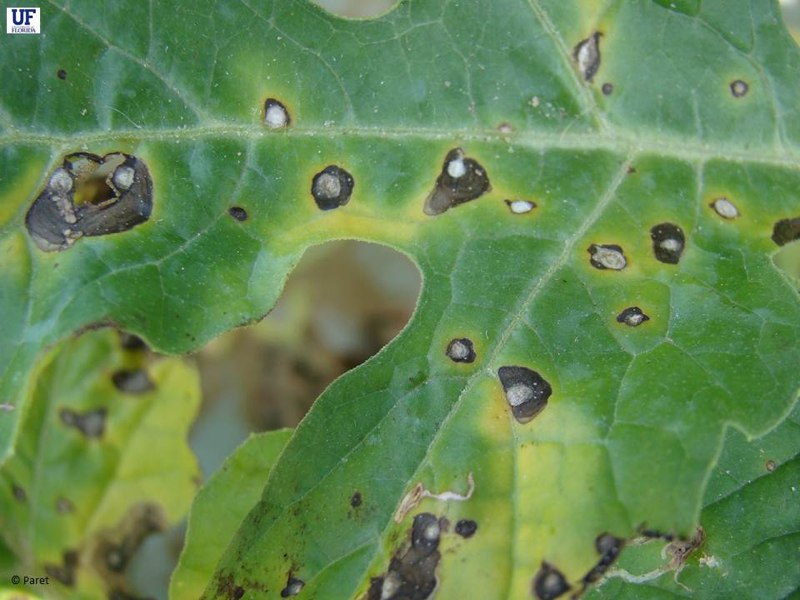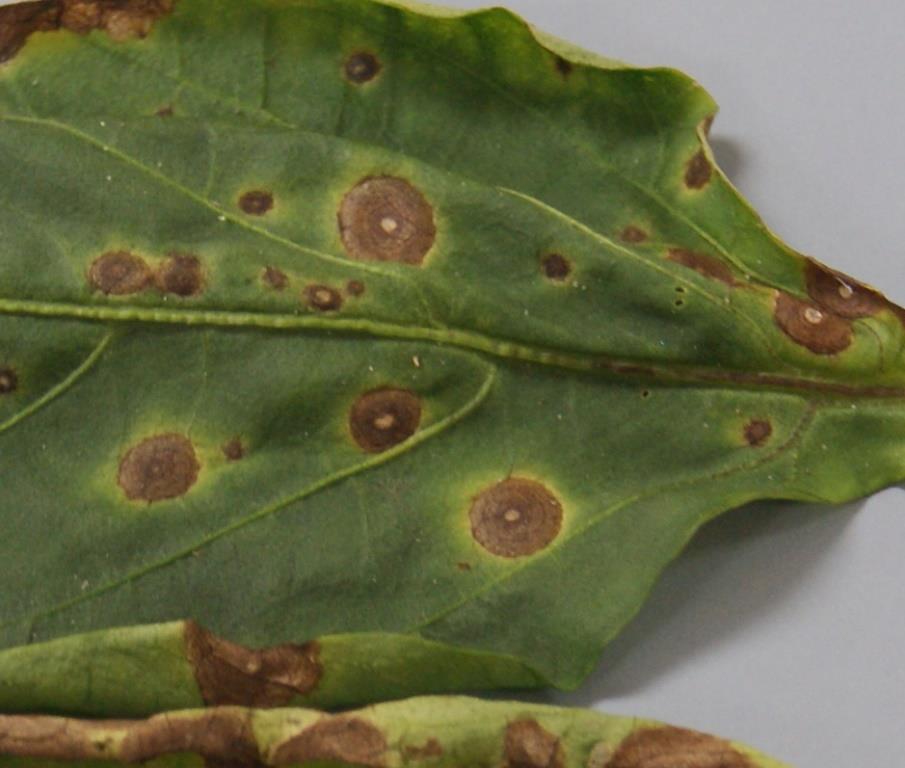This summer’s rainy and humid weather has created a perfect environment for the proliferation of a variety of fungal diseases. Of particular interest is Cercospora, which is a genus of fungus containing over 1,200 different species. Because there are so many species of this fungus, many different plant species are affected including many vegetables.
Cercospora causes purple, brown or black spots on a variety of field vegetables. These spots usually include a grey dead area in the center and a yellow “halo” or “ring” surrounding the entire spot. This disease usually starts at the base and interior of the plant, where there is more moisture and less air circulation, and moves outward. Severe Cercospora infections have the ability to defoliate entire plants within a season and kill annual vegetables, such as pepper, within a season.
Several methods exist to limit the spread and severity of Cercospora outbreaks. One preventive strategy is to keep clean fields by not allowing debris to pile up, as dead plant material can serve as a host to fungal disease. Another preventive strategy is to reduce water splash on leaves. Splashing water spreads Cercospora spores and allows them to take hold on a leaf. Irrigate the vegetables with drip irrigation to avoid wet leaves. Additionally, irrigate in the morning, so plants will not remain wet overnight. Cercospora requires 16 hours of moisture to reproduce.

Cercospora on Cucurbit
Spots may coalesce to form blighted areas on the leaves.
Image Credit U-scout (Mathews Paret)
It is a good practice to use recommended fungicides as part of a preventive spray program. When using fungicides, be sure to follow label directions since most products require different handling strategies. Be sure to use fungicides with more than one mode of action, since resistance may develop if only one type of fungicide is used. For more information about fungicides available for use in commercial vegetable production, please consult the following 2012-2013 UF / IFAS Vegetable Production Guide. Also, contact your County Extension Office for additional assistance.
- Steps to Remedy Non-Productive Pecan Orchards - June 30, 2023
- If Not Disease, Then What? Abiotic Vegetable Disorders - June 24, 2022
- Dormant Sprays Protect Fruit Trees from Future Insects and Diseases - January 28, 2022

